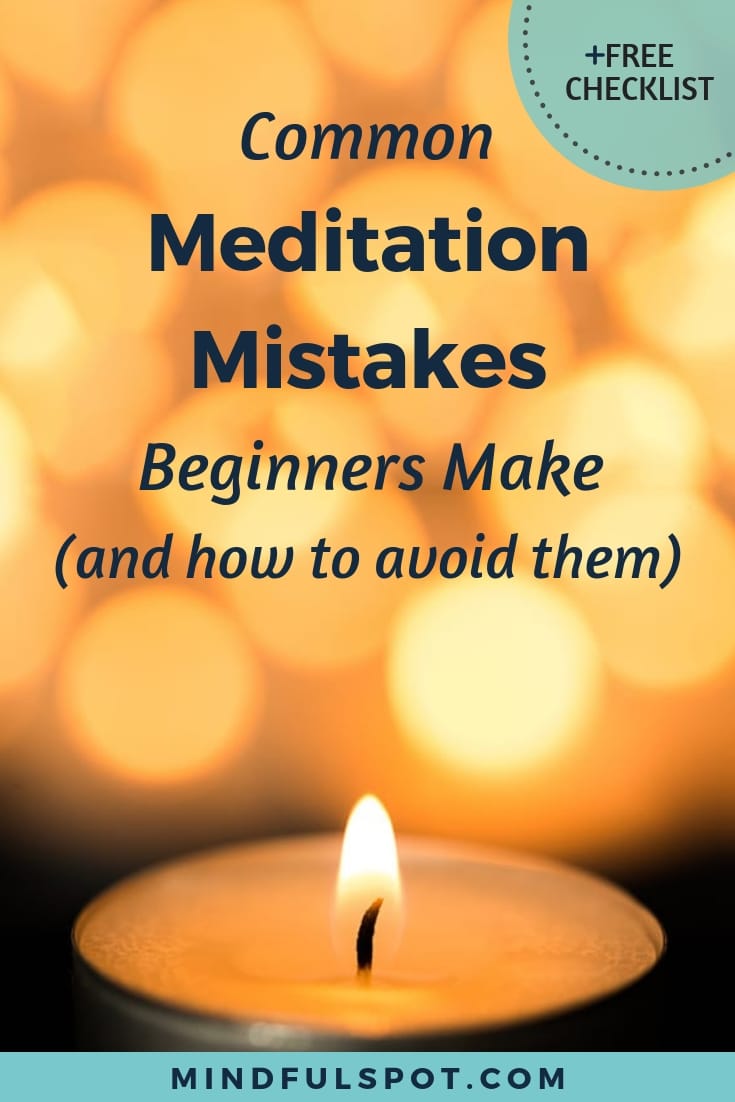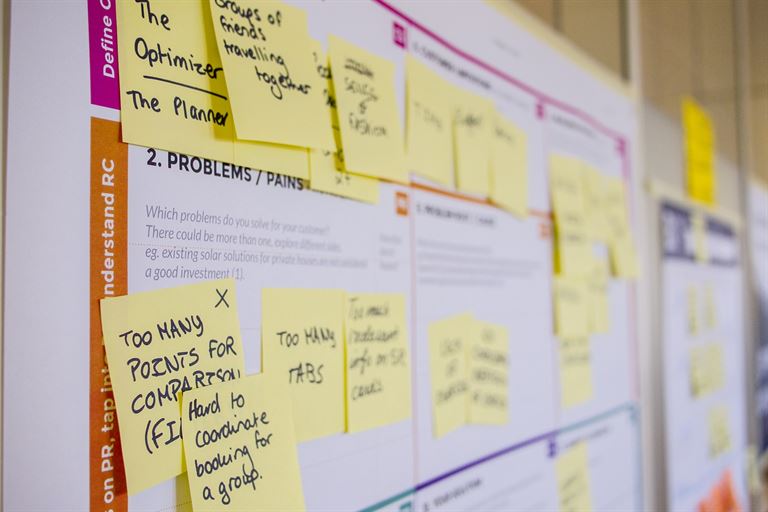Everyone, especially in the beginning, has doubts about their meditation practice.
You keep hearing that you need to observe your thoughts, but you may not be sure exactly how that feels. You sit down to meditate only to find yourself lost in a long train of thoughts. You turn to guided meditation apps but then have doubts about whether that counts as true meditation. You have all these questions that affect your practice, and you want to get some clarity to move forward.
When I just started my meditation practice, I had a lot of questions too. The one thing I remember reading is that your mind will fall into the same trap over and over again. I was looking for one single trap, but as it turned out, my mind loved falling into many traps repeatedly. It just couldn’t help itself; you could almost say that it loved those traps. In this article, I would like to share ten common meditation mistakes that await us on our journey to inner peace.
1. Wanting Relaxation

One of the biggest mistakes that you can make is trying to relax in meditation. Meditation is not about relaxation only. It’s about a delicate balance between relaxation and alertness. When you start to meditate and expect to fall into a relaxed state, you’ll find yourself disillusioned pretty quickly. You’ll probably experience a mixture of restlessness, discomfort, and boredom. Meditation is about noticing those states and being in them fully instead of rejecting them.

FREE Self-Test: How Spiritual Are You?
2. Relying on Guided Meditation (Too Much)

There is an opinion out there that we can’t practice true meditation with apps. I think in the very beginning, it’s okay to use guided meditation. What is not okay is to continually rely on a guided meditation app to unwind and relax. At some point, you should start practicing meditation in total silence by yourself. That is the only way you will make progress and learn to be present during daily activities.
3. Holding on to Your Thoughts
Every time you meditate, you’re bound to face some of the negative thoughts from the depths of your subconscious mind. You’ll try to hold on to them, but the key is to let them come and go. You shouldn’t try to analyze them during meditation. Just acknowledging you have that thought and bringing your attention back to the breath is enough. You can analyze your thoughts later.
4. Choosing the Wrong Time of Day
Does it matter what time of day you choose for meditation? Generally, there is no wrong or right time to do it. What you should be striving for is to learn to carry what you learned in meditation into daily life and all the challenging situations that you might face.
So it’s not about the right time; it’s about the ability to access a calm meditative state of mind no matter where you are. In the beginning, it’s better to meditate in the morning: a recent study showed that new habits are more likely to form in the morning, so you need to think about adjusting your morning routine accordingly.
5. Expecting Quick Results

Meditation brings a lot of benefits, but you’re not likely to experience all of them right away. The biggest mistake you can make is to start meditation as “medication.” This may result in failed expectations, disappointment, and frustration. Any kind of benefit that you experience is only a byproduct, not the ultimate goal. The sooner you realize that it’s a spiritual practice, the sooner you’ll experience all those benefits because they will come to you naturally at no particular time.
6. Judging the Experience
When you meditate, you’ll start to notice persistent thought patterns that your mind loves to engage in. In everyday life, those thoughts are mostly unconscious; only meditation can bring them to your attention. Those thoughts will try to draw you into a black hole of negativity, making you ruminate on the past and fear the future. The best thing you can do is not to get involved in those thoughts. You need to notice them and let them go.
7. Starting with the Wrong Duration
How long should you meditate? 10 minutes? 15 minutes? 30 minutes? What is the magic number that will finally make your meditation practice enjoyable? The answer is straightforward – it depends. For those who are starting out, very short daily sitting meditation no longer than 10 minutes is generally recommended. You can even do a three-minute meditation; the main thing here is that you do it consistently.
8. Not Making a Time in Your Schedule

This is another mistake that many of us make: we can’t find time to meditate because of a busy job and people in our life that need constant attention. On top of that, we already have a perfect routine that we’ve been following for years, and adding a 10-minute window to sit and meditate seems almost impossible. But you won’t be able to meditate effectively unless you make time for it. So instead of trying to find time, you should make time for meditation. It’s a conscious choice that you have to make for yourself and your well-being.
9. Being Inconsistent
Another mistake is being inconsistent. It’s important to understand that in the very beginning, meditation will only be a new habit. Nothing more, nothing less. You will not experience any significant change in how you think or behave until you’ve practiced for several months or more. And that’s a good thing. Meditation is a good habit. Just like reading, healthy eating, and exercise, it will yield results only after a certain period of time.
10. Thinking About the Right and Wrong Way to Meditate
During meditation, a lot of thoughts may pop up in your mind. The most frequent one will be whether you’re doing it “the right way.” It’s a mental habit you learn from early childhood. You always try to be perfect and avoid mistakes. To counter this tendency, you should forget everything you know about meditation, dropping every mental concept of how meditation “should be” and just let it “be.” This is the time when you connect with the depth of your Being.
In Conclusion

FREE mindfulness resources for stress relief
You need to identify any of the mistakes above and remember about consistency, not judging your experience, and treating all thoughts lightly. As a supplement, I’ve created a free checklist available through the download link below.
I’m a freelance writer and mindfulness advocate behind this blog. I started my meditation practice in 2014, and in 2017 I launched this website to share what I learn with others. Here are the three things you can do here:
1. Schedule a free consult if you want to learn Buddhist meditation.
2. Download free mindfulness resources for stress relief
3. Join Patreon for exclusive content and community meetings.








